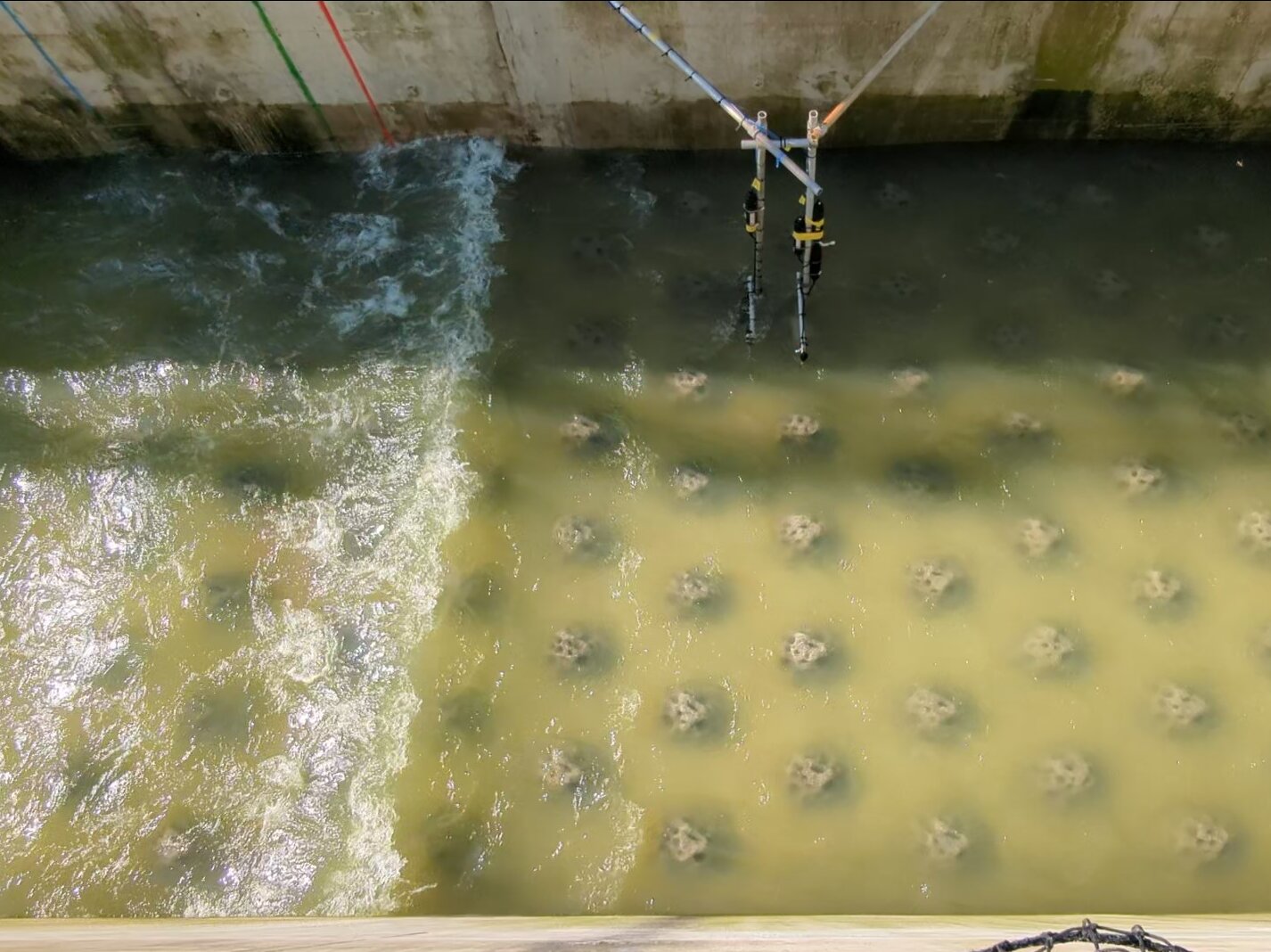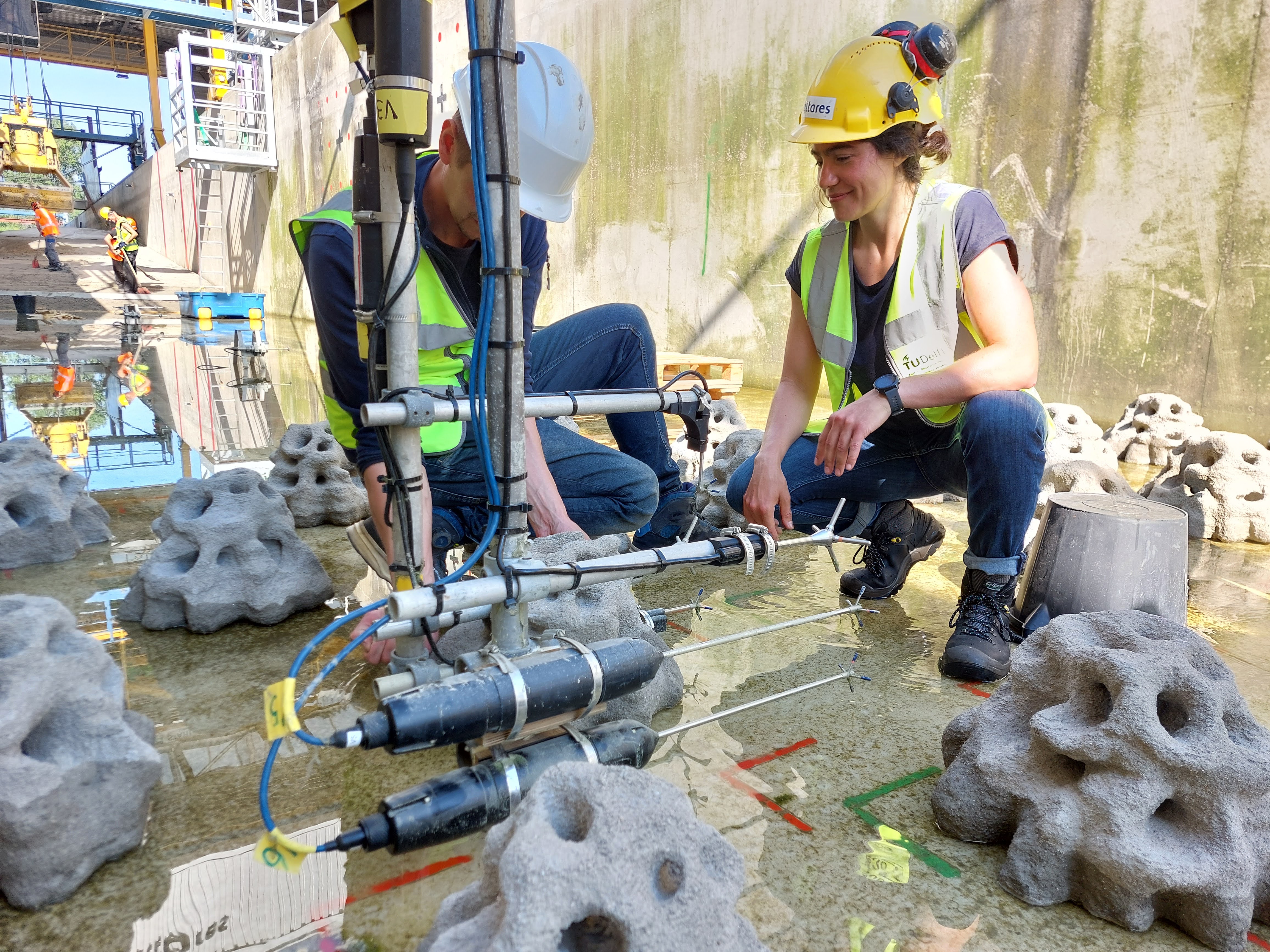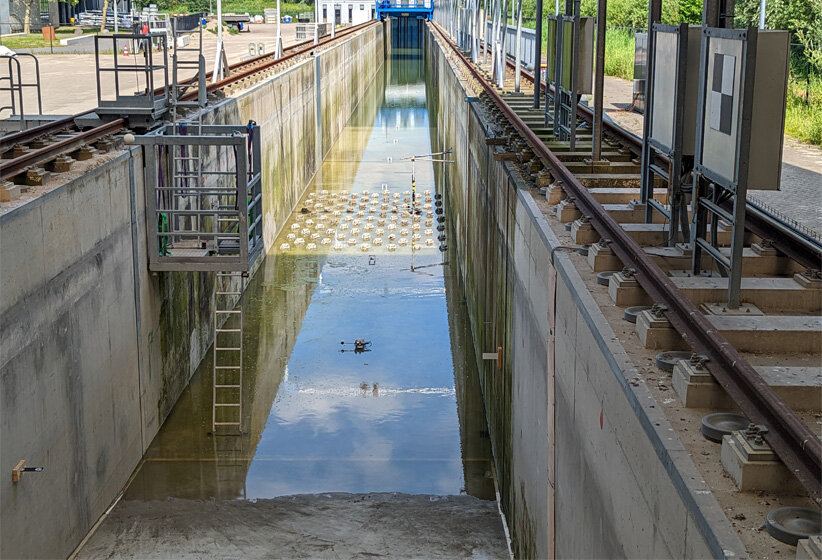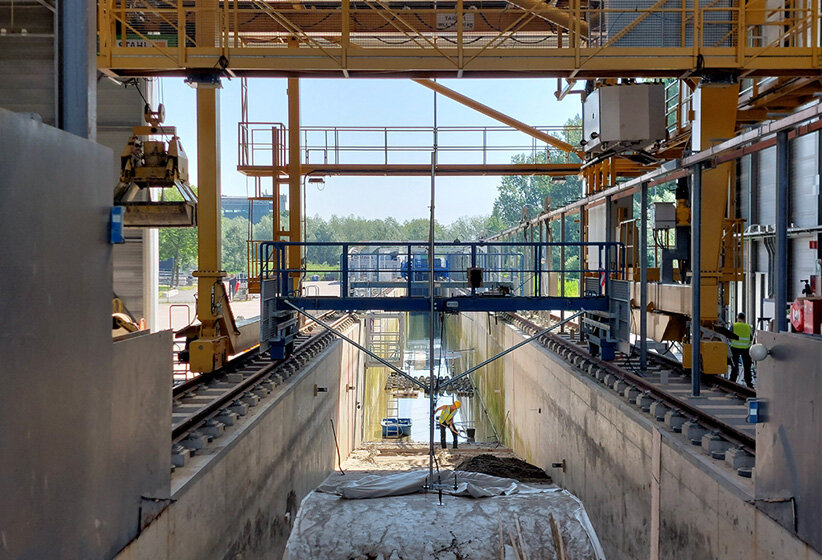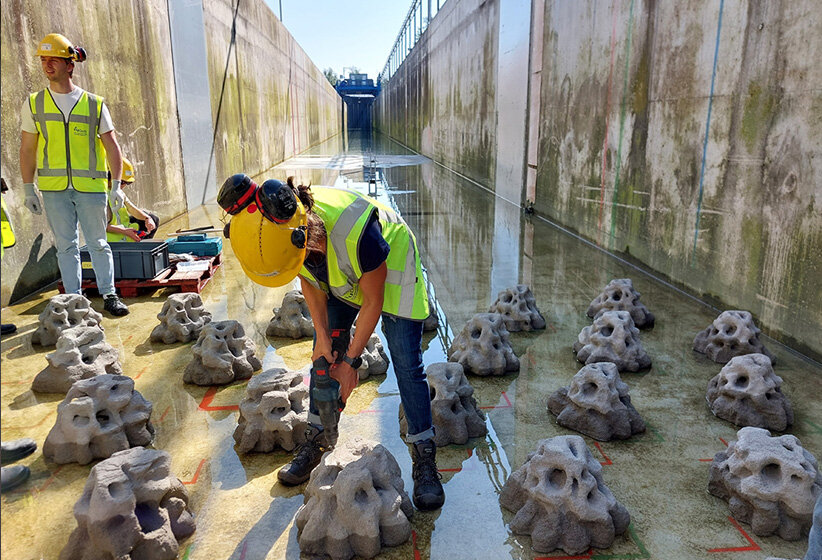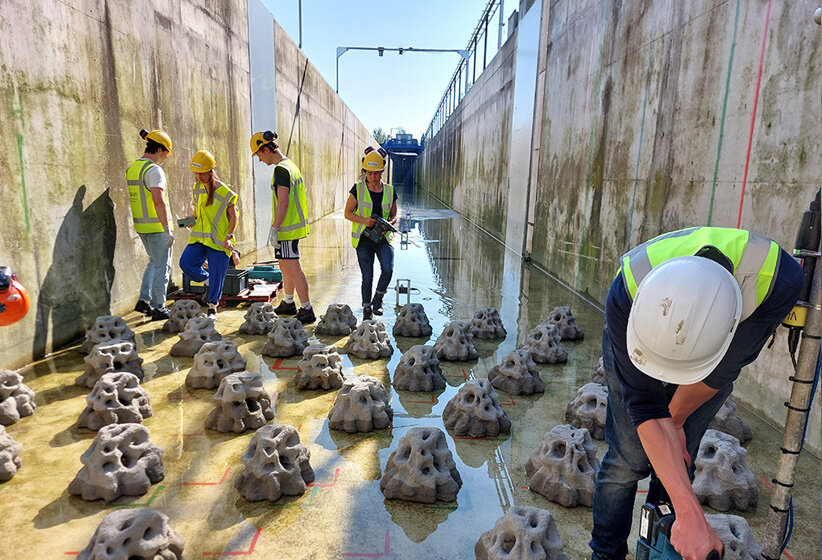Artificial coral reefs that help protect islands from flooding
Reef-lined islands are often low-lying and thus extremely vulnerable to coastal flooding. The vanishing of coral reefs worldwide gives the waves free rein. Besides efforts to protect the reefs, ways to artificially restore coral reefs are being devised. Can the proposed reef restoration be an effective mitigation measure against flooding?
To accurately model and predict the effect of coral reef restoration, researchers from TU Delft teamed up with the University of Plymouth who decided to construct a sandy island with a reef in one of the world’s largest wave flume. They measure how the waves change over the coral reef under varying sea level conditions. It is the first time that the impact of coral reef restoration is being investigated in such a large-scale laboratory experiment.
Degraded reef in the wave flume
Marion Tissier, assistant professor of Ocean Waves at TU Delft, is very pleased that this experiment can be carried out: “This is unique. Because of the dimensions of the wave flume we can approach the real situation at coral reef islands.” In the 300m long Deltares Delta wave flume, a sandy island of 50 metres has been built and will be approached by waves up to 1.5-meter high. At first the reef will be smooth, representative of a degraded coral reef. Thereafter, the coral reef will be restored using artificial reef structures.
Complex coral canopies
This is where master students Vincent Takens and Kjell Albers also come into the picture. They are now placing up to 150 pieces of 3D-printed artificial reefs in different configurations and spacing. These artificial reef structures are designed to mimic the complex structure of a natural coral canopy to function as an eco-friendly coastal protection measure.
Flooding risk reduction
With the insights gained on the waves interacting with reef structures we can better understand and predict the effect of reef restoration on island flooding. “I hope these insights will help optimising the restoration design for coastal protection”, says Tissier. Furthermore, the dataset will be used for numerical model development. “This will ultimately contribute to improved forecasting tools for reef-lined islands that can be used to analyse future flooding scenarios and risk reduction measures.”
After several tests with a smooth reef, it was time to cover the cliff with artificial reef structures. What is the effect on the incoming waves?
CREST
Marion Tissier of TU Delft is leading the ‘Coral reef RESToration to reduce island flooding’ (CREST) project, funded by the Top consortium Knowledge and Innovation (TKI) Delta Technology. In this project she works together with Deltares, Boskalis and the reef 3D printing startup Coastruction. The CREST experiments are furthermore embedded into a larger experimental program (called ARISE) led by the University of Plymouth investigating how atoll islands respond to sea-level rise.


